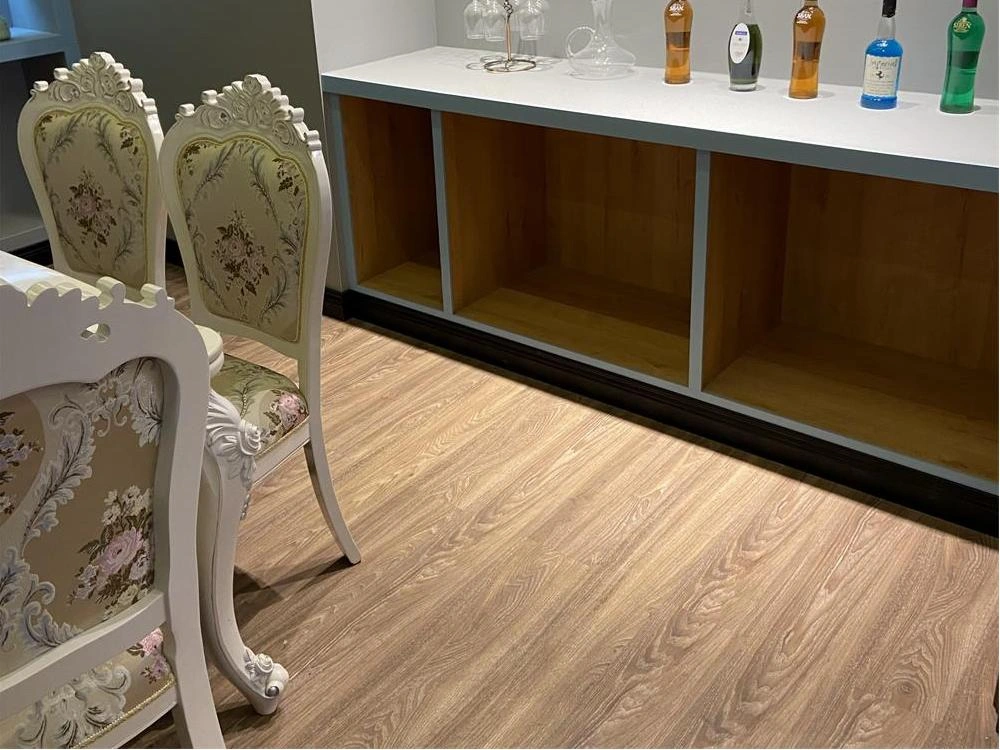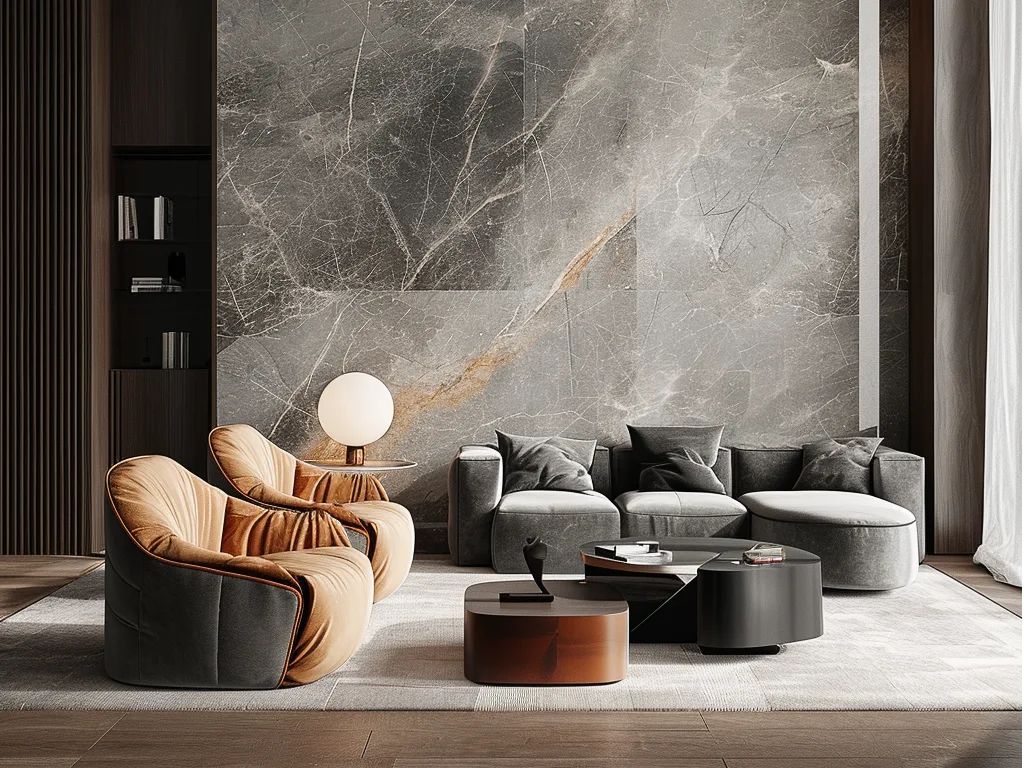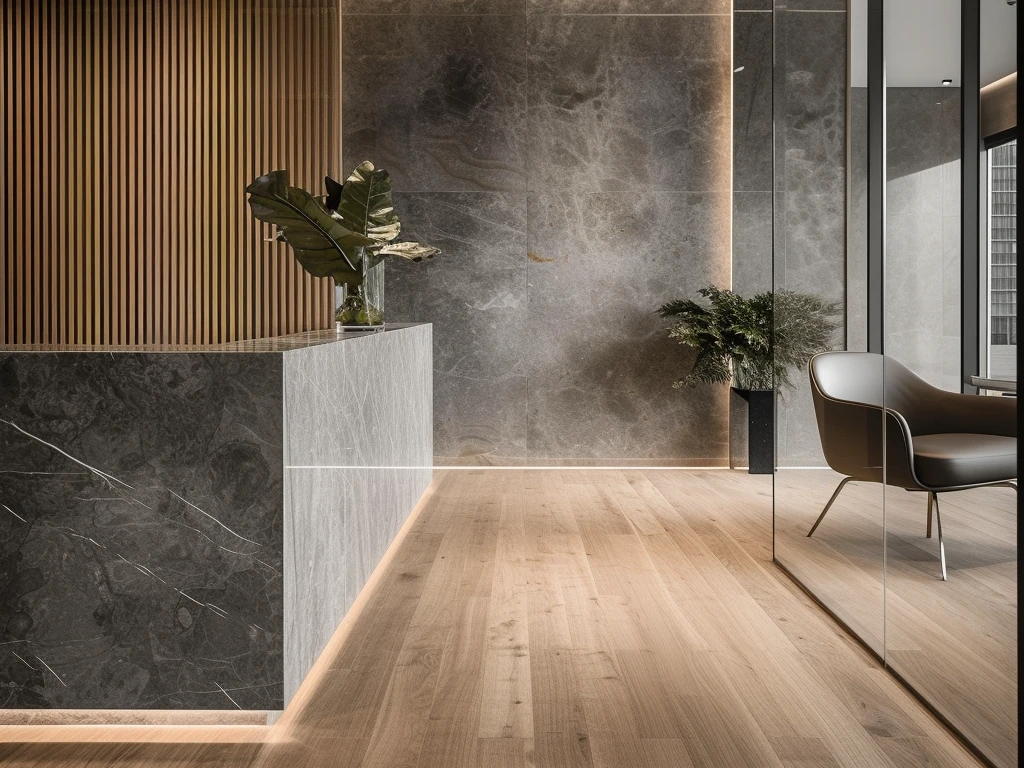Understanding WPC Cladding
Composition and Manufacturing Process
Raw Materials Used in WPC Cladding
WPC Cladding, or Wood-Plastic Composite Cladding, is manufactured using a combination of natural wood fibers and high-density polyethylene (HDPE). WPC combines the best properties of wood and high-density PE, giving you profiles with the natural appearance of the finest species of timber. This material blend ensures durability while maintaining an aesthetic appeal similar to traditional wood. The use of recycled plastics and wood flour also makes it an eco-friendly alternative to conventional cladding materials.
Steps in the Production of WPC Cladding
The manufacturing process of WPC Cladding includes a series of stages to follow through with the production seamlessly.
- Initially blending wood fibers and HDPE thoroughly to form a consistent composite material is essential for a seamless outcome in creating the cladding panels with specific shapes and sizes through extrusion, at elevated temperatures.
- Moreover Co-extruded WPC represents a type of wood plastic composite material that boasts an advanced premium shield encompassing all sides around its central core by undergoing simultaneous extrusion of the shield and core under high temperatures using a mold.
- The last step includes allowing the panels to cool down and then cutting them to ensure they meet the dimensions needed.
Characteristics of WPC Cladding
Durability and Strength
One of the standout features of WPC Cladding is its exceptional durability. It retains all the advantages of traditional WPC & even better as: scratch-resistant, waterproof, and weatherproof. These characteristics make it suitable for various climatic conditions without compromising its structural integrity or appearance over time.
Aesthetic Appeal and Design Flexibility
The design flexibility provided by WPC Cladding is thanks to its extensive variety of colors, textures, and finishes available. With WPC offering an array of profiles in colors it enables diverse design possibilities across numerous applications. This adaptability empowers architects and designers to create visual impacts while ensuring a unified aesthetic, for contemporary building endeavors.
Key Benefits of Using WPC Cladding
Environmental Advantages
The environmental benefits of WPC Cladding stem from its sustainable sourcing practices. By utilizing recycled plastics and wood byproducts, this material reduces waste and minimizes the demand for virgin resources. Eco-friendly and saving forest resources, Wood Plastic Composite (WPC) material is the newest innovation in stylish outdoor use.
Resistance to Weather Elements
The WPC Cladding shows durability against severe weather conditions such as intense heat or cold temperatures and prolonged exposure to rain and UV rays The external coating effectively repels colored liquids and oils making it effortless to keep the board surface clean This robustness guarantees that buildings retain their look and usability, for long durations.
Low Maintenance Requirements
Compared to wooden cladding that needs constant painting or sealing maintenance checks WPC Cladding requires minimal upkeep efforts. With its ability to resist scratches, stains, and moisture it reduces the necessity, for maintenance while guaranteeing lasting performance.
Applications of WPC Cladding in Modern Construction
Exterior Wall Cladding Solutions
In homes and neighborhoods alike WPC Cladding is a choice for enhancing the look of outer walls. Wood plastic composite panels are becoming more and more favored for sprucing up structures. These composite panels offer a substitute, for conventional wood panels bringing together the perks of wood panels with the added benefits of WPC paneling.
Enhancing Outdoor Living Spaces
WPC materials offer a range of uses outdoors like in patios or garden spaces where aesthetics and practicality combine seamlessly making it effortless to enhance living areas with little upkeep required.
Facade Design for Office Buildings
WPC Cladding offers a cutting-edge facade option for structures, like offices and retail spaces by blending resilience with contemporary appeal effectively.WPC Wall Paneling is primarily utilized for enhancing building facades and garden features and provides robust decorative options with a range of designs and colors that are simple to set up and maintain cleanliness.
Usage in Retail Spaces and Warehouses
Retail environments benefit from the decorative yet robust properties of WPC materials by incorporating them into walls or facades that endure heavy foot traffic while maintaining visual appeal.
Installation and Maintenance Considerations for WPC Cladding
Installation Techniques and Best Practices
Tools Required for Installation
When setting up WPC Cladding properly it’s important to have the tools for accuracy and efficiency. You’ll need a tape measure, a spirit level, a drill machine, screws, a saw with fine blades and clamps. These tools help with measurements clean cuts and securely attaching the panels. It is also suggested to use spacers to keep a gap between panels, for thermal expansion purposes.
Common Challenges and Solutions
During installation, a typical issue that arises is making sure the panels are aligned correctly to avoid affecting both the look and strength of the cladding. To tackle this problem effectively it’s important to check the alignment of each panel using a spirit level while installing them. Another concern is expansion and contraction caused by changes, in temperature. “WPC harnesses the strengths of wood and high-density PE ” causing it to expand slightly in hot conditions. To address this issue effectively and ensure proper installation practices are followed installers must adhere to the recommended spacing, between panels provided by the manufacturer guidelines.
Maintenance Guidelines
Cleaning Procedures
Maintaining WPC Cladding is hassle-free as it naturally repels stains and dirt build-up allowing for cleaning with a gentle mix of soap or detergent and water using a soft brush or cloth, for regular upkeep.” Its outer layer effectively blocks liquids from seeping in simplifying the removal of surface stains without causing harm to the material.
Repairing and Replacing Damaged Sections
When certain parts are significantly damaged it’s important to replace panels as needed first without causing any disturbance to nearby sections while removing screws or clips carefully. The next step involves installing a panel that matches the dimensions according to the standard installation guidelines previously discussed. The convenient feature of using “Wood Plastic material” makes repairs simple without the need, for extensive disassembly.
Latitude Custom Services for Tailored WPC Cladding Solutions
Latitude personalized services provide solutions for customers looking for distinctive uses of WPC Cladding in their endeavors utilizing innovative production methods and the design versatility offered by a diverse selection of profiles and colors, in WPC to guarantee that each project fulfills particular aesthetic and practical needs.
Appearance customization
Customers have the option to select from a variety of textures, finishes, and colors that enhance their architectural design while meeting the necessary structural requirements. The Latitude team also offers guidance to help choose appropriate materials according to the environmental factors and intended purposes.
Size customization
Different sizes and shapes tailored to needs are also an option thanks to advanced cutting techniques used in manufacturing processes like co-extrusion molding as mentioned before; “Co-extruded WPC is a new type of wood plastic composite material ” enabling creative designs, with lasting strength advantages.
Latitude goes the mile by providing expert assistance during the installation process to tackle any issues that may arise smoothly and effectively ensuring a smooth incorporation of WPC Cladding in various construction projects from home facades, to business exteriors.











